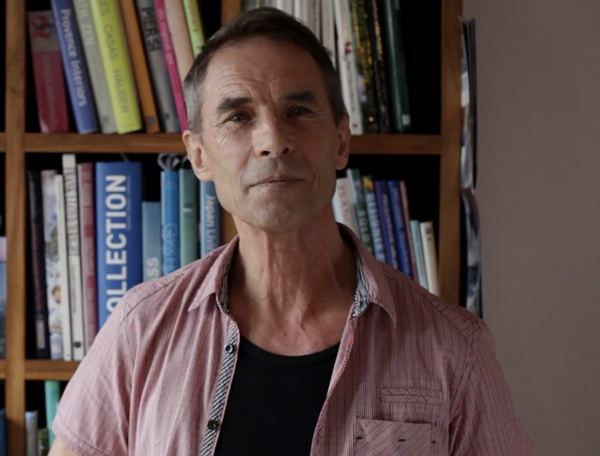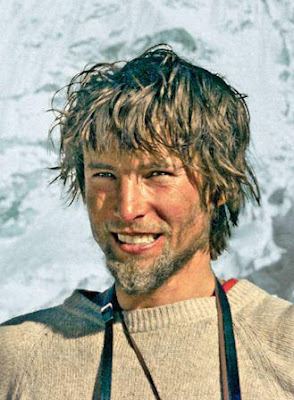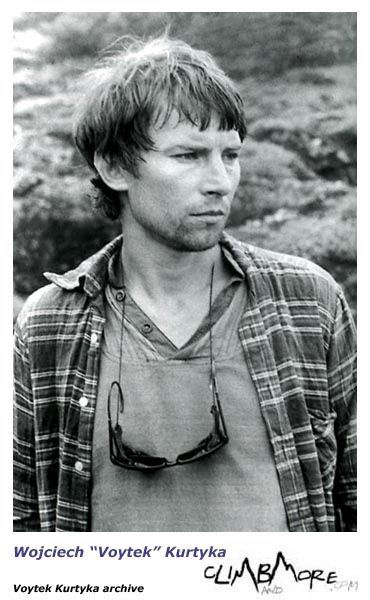Name Wojciech Kurtyka Role Mountaineer | Parents Henryk Worcell | |
 | ||
Education Wroclaw University of Technology | ||
Polskie himalaje wojciech kurtyka
Wojciech Kurtyka (also Voytek Kurtyka, born 25 July 1947, in Skrzynka near Kłodzko) is a Polish mountaineer and rock climber, one of the pioneers of the alpine style of climbing the biggest walls in the Greater Ranges. He lived in Wrocław up to 1974 when he moved to Kraków. He graduated as engineer in electronics (in 1973 at Wrocław University of Technology). In 1985 he beat "Shining Wall" Gasherbrum IV, which the magazine "Climbing" declared beat the wall to get the greatest achievement of mountaineering in the twentieth century. In 2016, he received the Piolet d'Or for lifetime achievement mountain.
Contents
- Polskie himalaje wojciech kurtyka
- Wojciech Kurtyka Piolet dOr Carrire 2016 La Grave La Meige alpinisme himalayisme montagne
- Career
- Rock climbing
- European mountains
- Great Ranges
- Eight thousanders
- References

Wojciech Kurtyka Piolet d'Or Carrière 2016 La Grave La Meige alpinisme himalayisme montagne
Career

His climbs in Poland consist of many difficult climbs – in crags, the hardest free climbs and free solo climbs of the time. In the Tatra Mountains he did a lot of first free ascents, first ascents in winter and established new winter routes.

Kurtyka became well known abroad in early 1973 after achieving the first winter ascent of Trollveggen (Troll Wall) in Norway, the highest vertical cliff on the continent (4 men Polish team, see the list of climbs below). He started in Greater Ranges in 1972, completing a little-known – but important according to him – first ascent of the wall of Akher Chogh in Hindu Kush, in lightweight, alpine style. He started climbing in the Himalayas in 1974. After participating in two big Polish national expeditions in 1974 and 1976, he gradually turned to lightweight expeditions.

His teammates were such world-class Himalayan climbers as, among others, Alex MacIntyre (1977, 1978, 1980, 1981), Jerzy Kukuczka (1981, 1983, 1984), Doug Scott (1993, Nanga Parbat attempt), Erhard Loretan (1988, 1990, 1991, 1997), Reinhold Messner (1982, Cho Oyu winter attempt), Yasushi Yamanoi (2000, 2001, K2 and Latok attempts).

The ideas of minimal equipment and support even on the most difficult walls and highest peaks was included in his philosophical concept of the "path of the mountain".

Kurtyka's and Robert Schauer's (Austrian) climb of the west face (Shining Wall) of Gasherbrum IV in 1985 was selected by Climbing magazing as one of the 10 most impressive climbs of the 20th century (including rock climbing, bouldering etc.).

Besides being a climber, Kurtyka is author of many articles on climbing published in Polish and English. He is also an inventor (around 1980) of the local Polish grading system of free climbs. This system uses an opened scale, called "Kurtyka scale" or "Krakowska scale".
In 2016, he received the Piolet d'Or Carrière (Lifetime Achievement Award).
Rock climbing
European mountains
High Tatras
Mountains of Norway
Alps, Mont Blanc Massif
Great Ranges
Eight-thousanders
- 1980 – Dhaulagiri - East face, new route, alpine style (not to the summit), with René Ghilini (Swiss), Alex MacIntyre and Ludwik Wilczyński (Polish)
- 1982 – Broad Peak - normal route, alpine style, with Jerzy Kukuczka
- 1983 – Gasherbrum I, Gasherbrum II - two new routes, alpine style, with Jerzy Kukuczka (Polish Alex MacIntyre Memorial Expedition)
- 1984 – Broad Peak - Traverse of all three Broad Peak summits, North (new route), Middle (or Central) and Main, alpine style, with Jerzy Kukuczka
- 1990 – Cho Oyu - SW face, new route, alpine style, with Erhard Loretan and Jean Troillet
- 1990 – Shisha Pangma, central summit 8008 m, S face, new route, alpine style, with Erhard Loretan and Jean Troillet
